
Water News
Water2Drink Blog > Water NewsFree Shipping... Or Not?Monday, August 31, 2015 - Posted by Water2Drink, in Water News, Products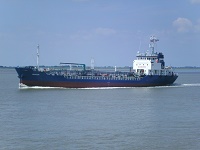
“An Alaska company is planning to be the first to ship
massive amounts of fresh water to drought-plagued California, potentially as
much as 10 million gallons a month,” so says a recently published article by USA Today.
A former bottled water company executive, Terry Trapp (now
CEO of Alaska Bulk Water), says his company has the rights to take up to 9
billion gallons of water from the Blue Lake in Sitka, AK. He would ship fresh water
from #Alaska via tankers to help relieve the drought in California. However,
California water experts are doubtful of the cost efficiency of this option.
“Ideas like this ‘are technologically feasible but
economically unreasonable,’” says Peter Gleick of the Pacific Institute, in the #USAToday article. The #PacificInstitute is a global water think tank based in Oakland,
CA, and he believes there are many such ideas about shipping #freshwater
without understanding the cost issues involved.
Sustainable water management must look at all facets of
water sourcing. While it may be possible to provide water distribution from
other areas of the country, the cost of that distribution and associated environmental
impacts must also be considered. We may be able to bring water to drought
stricken areas, but at what cost to the planet? What will we be adding to #globalwarming
by burning fossil fuels in the tanker ships and trucks that deliver the water?
There are ways to be sure you are getting the most
healthful, economical water possible. First, by using your local municipal water
supply instead of buying bottled water, you are not contributing negatively to
the environment. #Water2Drink recommends
the use a high quality, point of use water filtration system, such as a
Multipure Drinking Water System that is NSF-tested and certified to remove the
most potential contaminants. A Multipure filter is designed to work with your locally
treated water source. You may also purchase a #Multipure Drinking Water System
that includes a capacity monitor, to ensure you are receiving the most gallons
from the solid carbon-block filter. A correctly installed Multipure Drinking
Water System from Water2Drink.com provides clean drinking water for just $0.09
per gallon, with no waste.*
While you may not pay shipping costs for your water, you may
be paying the price with your #health. Water2Drink can help you decide which
Multipure filter is the most effective and economical choice for you and your
family’s needs.
|
 1 Comments 1 CommentsTweet |
No New WaterSaturday, August 22, 2015 - Posted by Water2Drink, in Water News
When today’s news is full of #drought reports, parched farms,
mandatory water restrictions, and environmental disasters that affect U.S. water
supplies, it begs the question: how do we find more water? The answer is, there is no new water. If you think about it, Earth is a self-sustaining environment. The air, earth, plants, and water
that are available today are all recycled or regenerated from earlier
generations of same. The trees and plants take in the carbon dioxide that we
exhale, and in turn, emit oxygen that breathing organisms need to survive. The
earth – the dirt and rocks and bedrock on which we live – is recycled by
tectonic plates, one plate sinking under another, and regenerated as lava through
volcanic activity. And the water cycle – the process by which water circulates
on the earth – is a closed system. There is no “new” fresh water coming to the
earth from distant places. As a culture, we need to be more open-minded about
how to meet the increasing water needs of humanity. Earlier this year, the New York Times posted an article online about the recycling of wastewater into a potable water source. When
confronted with the idea of purifying and re-using #wastewater, many people are
squeamish about the process. According to the NY Times, “water recycling is
common for uses like irrigation.” But Orange County, CA has been operating a purification
plant since 2008, and the treated water is used “to replenish the area’s
aquifers and … diluted by the natural water supply. This environmental buffer
seems to provide an emotional buffer for consumers as well.”
Besides Southern #California, other water municipalities are
reusing water as well. In 2011, USA Today reported, “the drinking water supply
of Fairfax Water, which serves 1.7 million in Northern Virginia… has included
recycled sewage water since the 1970s.” In Singapore, nearly 5 million
residents have accepted recycled wastewater, “used largely for industrial
purposes… [but] increasingly, it’s also running out of Singapore’s taps,” says #USAToday.
Regardless of where your water is sourced (river, aquifer,
or recycled), you can be assured of delicious, healthier water by using a
Multipure Drinking Water System. #Water2Drink offers the entire family of
Multipure Drinking Water Systems to fit your needs. Whether you rent or own
your home, whether you travel – Water2Drink can provide a filter that reduces
the most contaminants, while retaining beneficial dissolved minerals such as
calcium. |
 0 Comments 0 CommentsTweet |
The Animas River SpillFriday, August 14, 2015 - Posted by Water2Drink, in Health, Water News, Water Safety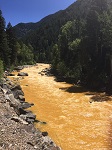
Riverhugger 6 August 2015 By now you’ve probably seen the news of the recent pollution
at the Gold King Mine near #Durango, Colorado. The Environmental Protection
Agency (EPA), tasked with monitoring and assessing abandoned mines,
accidentally destroyed a dam that contained heavy metals used in gold mining. About
three million gallons of contaminated waste water spilled into a tributary of
the Animas River. Just last week, #Water2Drink blogged our belief that the
EPA is a reliable resource of information regarding the laws and regulations
for clean water, air, and land issues. We stand by that position and believe
the #EPA has been forthcoming about the scope of the damage. The EPA is working with the local agencies
and state officials to respond to citizen’s concerns and ensure the health and
safety of the river and surrounding environment, and of those citizens whose
water source has been impacted.
As a result of this accident, CBS News reports that “the
plume of heavy metals, including arsenic and lead, flowed into southwest
Colorado’s #Animas River and also into the San Juan River in New Mexico.” As
the cleanup continues, these #heavymetals will be present in aquifers and other
water sources unless removed by water utility companies. According to the CBS
News website, “The EPA said it will be Monday at least, but perhaps take weeks
more, before test results can help show what hazardous materials are in the
water. The higher the concentrations, the higher the cost of removing heavy
metals.”
If you have been impacted by the Animas River spill in
#Colorado or #NewMexico, you can protect your health and the health of your
family by using a point-of-use water filtration system in your home. The
Multipure Aquaperform Drinking Water System (MP880 series) is one of the most
technologically advanced water treatment systems available for the home. It effectively
reduces heavy metal contaminants such as lead to 99.3%, mercury to 99%, and arsenic
up to 99.9%. These reductions are tested and certified independently by NSF
International, a noted authority. The #Multipure MP880 series is also economical
to own, as its’ long filter life provides up to a year’s capacity of heavy
metal reduction for just pennies a gallon. |
 0 Comments 0 CommentsTweet |
A Quality EducationTuesday, August 4, 2015 - Posted by Water2Drink, in Water News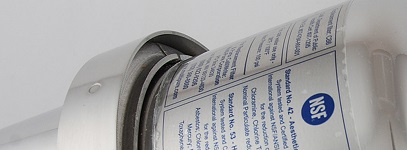
With summer’s end rapidly approaching, thoughts once again turn
to school and learning. Water2Drink believes that educating yourself on the quality
of your water will help you make decisions that result in health improvements
for you and your family.
Water2Drink strives to present current, accurate, and
appropriate news and data resources for the information and education of our
customers. We’d like to share a few of our favorite sources for reliable,
accurate and up-to-date water source information. We rely equally on each of these
sources for news and information. Water Quality Association – The mission of the WQA is, “to be
the recognized resource and advocate for the betterment of water quality.” WQA
represents that part of the water industry which focuses on homeowner’s or
business owner’s property. Created in 1974 from the merger of two trade
associations, the #WQA provides approachable information for learning about and
improving the quality of your water.
Environmental Protection Agency – The EPA is an expansive
resource for news, technology, laws and regulations regarding not only clean
water, but also a resource for clean air, climate change, and land and waste
issues, among many others. The EPA website provides news information, links to
federal and state resources, online training, links to community resources and
videos. The #EPA gives all U.S. citizens a place to learn about the issues that
affect not only their community, but the nation as a whole.
Environmental Working Group – The EWG is a non-profit,
non-partisan organization that focuses on human health and environmental
issues. They ask questions that lead us to get to know our environment and take
control over the issues that affect our health. The #EWG website is clean and easy
to navigate by topic, and provides consumer guides as well.
NSF International – Founded in 1944, NSF’s mission as stated today
is, “to protect and improve global human health.” NSF International has become the most
respected organization to which consumers, manufacturers, and regulators look
for developing public health standards. NSF also tests and certifies products to
those standards. As stated on their website, “as an independent accredited
organization, we test, audit and certify products and systems as well as
provide education and risk management.” If you are comparing the benefits of a
health product such as a Multipure Drinking Water System, you will get an
accurate, apples-to-apples comparison of water filtration systems by using #NSF
data certifications. Water2Drink.com relies on these organizations to provide independent
research and guidance on many global health issues. We suggest you explore the
wealth of information on these sites. Please contact #Water2Drink if you would like to
talk about your water quality and how we can assist you in choosing the best #Multipure Drinking Water System for your family.
|
 0 Comments 0 CommentsTweet |
More Lead in the Water?Friday, July 24, 2015 - Posted by Water2Drink, in Water News, Water Safety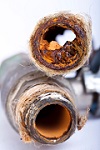
Lead contamination in drinking water is still a concern to some
U.S. citizens, and if it’s not, it should be. A new study, “Lead Release to
Drinking Water from Galvanized Steel Pipe Coatings,” (Brandi Clark, Sheldon
Vaughn Masters, and Marc Edwards, #VirginiaTech, Blacksburg, VA,) reveals that
galvanized steel pipe is being demonstrated as a source of lead contamination
in drinking water. The study can be accessed for free until Aug. 22, 2015, on
the Environmental Engineering Science website. Galvanized pipe is a steel pipe that is covered with a protective
layer of zinc. This type of pipe was installed as water lines in many homes
built in the last century. Over time, zinc erodes from the galvanized pipe, allowing
corrosion to build up on the inside of the pipe, resulting in the potential for
lead accumulation and contamination.
While consumers may have had water lines replaced in their
home, #galvanizedpipes may still exist outside the home; therefore, consumers
are susceptible to lead contamination between the municipal water source and
their home.
The only way to prevent lead contamination in your drinking
water is to use a point-of-use drinking water filter that is NSF-tested and
certified for lead reduction. Boiling water does not reduce lead levels, nor do
pitcher/drip #waterfilters that you fill with tap water. Filtered water should be
used for all food and drink preparation, including infant formula, concentrated
juices, ice cubes, and washing fruits and vegetables.
All Multipure Drinking Water Systems lead the industry in
contaminant reduction, including lead. Multipure’s exclusive compressed,
activated solid carbon block filter reduces the widest range of health-concerning
contaminants. However, it does not
remove healthful minerals needed by the body, requires no electricity, and adds
no #salt or #silver to the water. |
 0 Comments 0 CommentsTweet |
Are Water Fountains Fading?Friday, July 10, 2015 - Posted by Water2Drink, in Health, Water News
With the incredible increase of bottled water consumption
(9.67 billion gallons annually), has the public trust in water fountains begun
to fade? A recent article in The
Washington Post highlights the drinking water fountain and explores whether
it’s possible “to make water fountains cool again.” When public drinking water fountains first became popular in
the mid-19th century, the spread of contagious diseases was notable.
The original ‘Bubbler’ water fountain design by Kohler Water Works (now #Kohler
Company) sent water straight into the air, with the excess water running back
down over the sides of the nozzle which contributed to the spread of disease.
Several years later, the #Bubbler design was changed to the now current arched
stream of water.
According to the #WashingtonPost
article, “Fountains were once a revered feature of urban life, a celebration of
the tremendous technological and political capital it takes to provide clean
drinking water to a community. [But] today, they’re in crisis.” Fountains have
become the new pay phone, being phased out of community spaces, schools, and
stadiums. “In short, we don’t trust public fountains anymore.”
The distrust of public water supplies can be traced to the
marketing wizardry of the bottled water companies. While the public today is concerned
with pollution in drinking water, we should also concern ourselves with the onslaught
of global plastic pollution brought about by the bottled water industry.
How can you make a difference, while still knowing your
drinking water is clean and safe? Use a point-of-use quality water filtration
system such as a Multipure Drinking Water System. Once you own a #Multipure, use it to fill a
reusable water bottle for portability. Using a Multipure solid carbon block
filter removes chlorine and reduces many unhealthy #contaminants, while leaving
intact the healthy dissolved minerals your body needs. The cost of #bottledwater
(per gallon) can be as high as 48 times the cost of using a Multipure Drinking
Water System. |
 0 Comments 0 CommentsTweet |
ChoicesMonday, June 29, 2015 - Posted by Water2Drink, in Water News, Products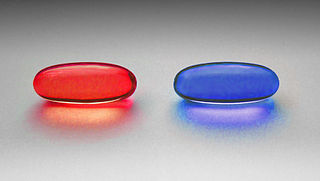
27 August 2014 W.Carter So, you’ve decided to purchase a drinking water filter to
use in your home. How can you easily and effectively evaluate all of the
choices in today’s market? Water2Drink.com recommends starting with facts that you can
objectively compare with other drinking water solutions. Objective data can be collected and compared for
the following types of information:
The answers to these and other frequently asked questions will
help pinpoint a high quality, reasonably priced drinking water system such as a
Multipure Drinking Water System. The information you gain in researching these questions
will help you answer why you need a water filtration system (Questions 1 and
2), the financial savings and the return on your investment of a #Multipure filter
(Question 3), and the health and stability of the manufacturer in regards to
both the product and the mission of the company (Questions 4 & 5, warranty
and returns, and Question 6-reputation). |
 0 Comments 0 CommentsTweet |
How Much Hydration Are Your Kids Getting?Sunday, June 14, 2015 - Posted by Water2Drink, in Health, Water News
A new study from the #Harvard T.H. Chan School of Public
Health determined that over 50% of U.S. children and teens are not getting
enough hydration. Researchers examined data that included more than 4,000
children and teens aged 6 to 19, and found that a little more than half were
not getting sufficient #hydration. Research notes indicate that nearly a
quarter of the participants reported drinking no water at all. The effects of #dehydration can impact cognitive functioning
and mood, and while long-term dehydration can lead to serious health issues, “effects
of mild dehydration can include headaches, dry mouth, dizziness, irritability,
increased heart rate, and poorer physical performance,” according to CBSNews
online reporting.
If kids are given the opportunity and encouraged to drink
more water, they most likely will. Sending a water bottle filled with fresh, Multipure-filtered
water will give your child an opportunity to hydrate without having to stop
their activities or search for a water source. Providing kids with access to
clean water instead of sugary drinks or juices allows them to train their
palate to crave less sugar. |
 0 Comments 0 CommentsTweet |
Clean Water for EveryoneMonday, June 1, 2015 - Posted by Water2Drink, in Health, Water News
Recently, Water2Drink participated in a charitable event organized
by #Multipure International’s Pure Foundation. The Pure Foundation was conceived
to operate a charitable organization dedicated to the education, assistance,
and improvement of health for people without access to healthy, clean water.
In April of 2015, The Pure Foundation’s founder, Jennifer
Rice (Executive VP of Administration, Multipure), several Multipure employees,
and 12 Multipure distributors including #Water2Drink, visited Edgewood, a
children’s charitable organization in San Francisco, CA. We spent the day installing Multipure
Drinking Water Systems and Water Coolers in nearly every building on the
grounds. These cottages and buildings were built in the early part of the 20th
century, and the residents and staff who live and work in the buildings were not
receiving the benefit of #healthywater. The Pure Foundation donated over twenty
Drinking Water Systems and installed them all, and will continue to provide maintenance
support and replacement filters for life at no cost to Edgewood. What an
incredible gift of support and dedication to the care of these young people!
The Pure Foundation wants to improve the lives of children
and families everywhere, and we at Water2Drink.com were honored to be part of the
Pure Foundation installation team. We share
the Pure Foundation’s mission of creating a world of clean drinking water for
all people.
Contact Water2Drink.com today if you’d like to learn more
about why we are so passionate about improving everyone’s health with fresh,
clean drinking water.
|
 0 Comments 0 CommentsTweet |
Down the DrainMonday, May 25, 2015 - Posted by Water2Drink, in Health, Water News, Products, Water Safety
The decision to purchase and use a water filtration system
is hopefully the beginning of consumer awareness of the quality of and care for
our fresh water sources. By the time a consumer makes that choice to invest in
their health, he or she has typically uncovered the poor quality of not only
their local water supply, but may have also uncovered larger, farther-reaching concerns
regarding the impact of purchasing choices on the global water supply. An article in this week’s New York Times online introduces us to Stiv Wilson, an
environmental advocate who has taken on the battle against microbeads.
Microbeads (or, #microplastics) are those miniscule colorful dots contained in toothpaste,
hand sanitizers, facial cleansers, and other cosmetic products. But once the
product is rinsed away, the beads rinse away with it and end up into our water
sources. “By the billions,” according to Rachel Abrams' article. “‘The effect is
similar to grinding up plastic water bottles, other products of concern to
environmentalists, and pumping them into oceans and lakes. But because
microbeads are small enough to be ingested by fish and other marine life, they
can carry other pollutants into the food chain.’”
While four states (IL, ME, NJ, and CO) have restricted the
use of #microbeads, there is no federal mandate at this time to restrict or ban
synthetic particles, or even to require the development and use of
biodegradable beads. But consumers can make responsible personal choices, deciding
not to purchase or use products that contain microbeads. “Consumers have more
outlets than ever to voice concerns about products, particularly online, where
a whisper of danger can turn into a roar. Seeing the effect on their sales,
manufacturers have increasingly faced pressure to respond to those concerns,”
says Ms. Abrams. The only way we can prevent this microscopic plastic pollution
in our waters is by insisting the products we buy are responsibly produced.
In the meantime, the use of a solid carbon block filter,
such as a Multipure Drinking Water System from #Water2Drink, will effectively remove these particles
from your drinking water. All Multipure systems are NSF tested and certified
to the submicron level, using both mechanical filtration and electrokinetic adsorption to
capture particulate matter. As the water passes through its densely compacted
#solidcarbon block filter, particles as small as 0.5 micron are removed. |
 0 Comments 0 CommentsTweet |
Proceed with CautionFriday, May 15, 2015 - Posted by Water2Drink, in Water News, Water Safety
Trying to reduce our country’s dependence on overseas oil
has led to the development of hydraulic fracturing, or fracking. The fracking
process blasts a cocktail of chemicals and huge amounts of water into shale
deposits, which releases natural gas and oil from the rock. Fracking creates
concern on two fronts: one, the contamination of surface, ground, and drinking
water; and two, the loss of millions of gallons of fresh water from the water
cycle. Recently, the drinking water of three Pennsylvania homes was
found to contain trace amounts of fracking fluid. While the amounts of contamination at these home
were under levels that would cause health effects, “‘These findings are
important because we show that chemicals traveled from shale gas wells more
than 2 kilometers (1.25 miles) in the subsurface to drinking water wells,’ says
Susan Brantley, a Penn State University professor of geosciences.” This raises
the question, how far can fracking contamination migrate into aquifers and other
#freshwater sources?
Fracking wastewater management is our second concern. #Fracking
wells use between one and five million gallons of local fresh water. These
amounts stress the surface and groundwater supplies available. “Up to 60% of
the water injected into a wellhead during the fracking process will discharge
back out of the well shortly thereafter, as flowback wastewater. Thereafter, and
for the life of the wellhead, it will discharge up to 100,000 gallons
(378 m3/day) of wastewater. This wastewater needs to be captured, and disposed
of or recycled,” according to an article by Jeff Easton on the Waterworld
website (emphasis added). This significant increase of contaminated
#hydraulicfracturing wastewater requires a long term solution for its
treatment, recycle, or reuse. |
 0 Comments 0 CommentsTweet |
The Dirty DozenSaturday, April 25, 2015 - Posted by Water2Drink, in Health, Water News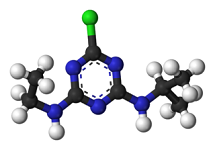
Atrazine Molecule It’s human nature to discount or ignore issues that are not
right in front of us. You pay attention
to the bus that cut you off in traffic, but are you thinking about chemical disruptions
that may be happening in your body right now? Endocrine disruptors are hormone-altering chemicals that do
exactly as they say: they disrupt important bodily functions that are driven by
your #endocrine system. According to the Environmental Working Group’s (EWG)
website, endocrine disruptors can be responsible for “increasing production of
certain hormones; decreasing production of others; imitating hormones; turning
one hormone into another; interfering with hormone signaling; telling cells to
die prematurely; competing with essential nutrients; binding to essential
hormones; {and} accumulating in organs that produce hormones.”
Of the EWG’s “Dirty Dozen” #endocrinedisruptors, water-borne
contaminants are the easiest to avoid by using an NSF-tested and certified water
filter. All Multipure Drinking Water Systems are certified by NSF International to reduce the
greatest number of #contaminants, including many of those on the EWG’s Dirty
Dozen list. BPA, atrazine, lead, arsenic, mercury, fire retardants, and
pesticides are reduced by using a #Multipure Drinking Water System. |
 0 Comments 0 CommentsTweet |
All in the FamilyThursday, April 16, 2015 - Posted by Water2Drink, in Health, Water News
This week, we share this video of one family’s story about gaining
critical knowledge of their drinking water system, and understanding the
importance of knowing the effects of choices that a parent might make. This story hits close to home, as it is told
by Jennifer Rice, Executive Vice President of Multipure International, and the President
of Multipure’s Pure Foundation. The Pure
Foundation is a charitable organization dedicated to bringing clean drinking
water and better health to people without access to it.
Jennifer’s story about the health of her child highlights
the reason why we at #Water2Drink encourage you to contact us with any
questions you may have regarding the Multipure family of products. Each drinking water filtration system is
NSF-tested and certified, and each system offers different benefits for our
customers. By talking with you about
your personal #waterfiltration needs, Water2Drink.com will help you pinpoint
the most effective and economical drinking water system for your family. We can
explain how Multipure drinking water systems allow beneficial minerals to
remain in the water (excluding the Reverse Osmosis technology), while still
providing the greatest reduction of the most contaminants. We can also describe
how Multipure offers superior product performance when compared to others on
the market, and how the price you pay is reflected in the highest standards of
design, certification, and manufacture of your Multipure system. Our mission at Water2Drink.com is to present helpful information regarding the global water industry and to assist consumers in obtaining local, clean water. There are myriad of factors to consider when choosing the right drinking water filtration system for your health and the health of your loved ones. |
 0 Comments 0 CommentsTweet |
EPA ECHO Now AvailableFriday, April 10, 2015 - Posted by Water2Drink, in Water News, Products
You may have read previous blog posts by Water2Drink about
the Safe Drinking Water Act (SDWA), the importance of water quality education,
and reading your local water report. We like to bring our customers the latest
in water news and provide resources for you to monitor and advocate for locally
provided clean water. The Environmental Protection Agency has a new user friendly
website that presents enforcement data about SDWA drinking water violations.
This service, called ECHO (Enforcement and Compliance History Online) “contains
interactive charts and graphs that provide information regarding the compliance
of public water systems with federal drinking water regulations, as well as
enforcement actions,” according to the EPA press release dated 4/7/2015.
While the information provided by EPA’s ECHO drinking water dashboard
is an overview of the regulatory activities of #EPA by states, tribes, and
territories, it does provide the opportunity to “View More” additional charts
and data by using the menus at the top of each section. Users can also access
and download detailed data from each chart. Additionally, the dashboard
provides information not only on public drinking water systems, but also provides
data on “Air,” Hazardous Waste,” and “Water” as well. |
 0 Comments 0 CommentsTweet |
Spring CleaningFriday, April 3, 2015 - Posted by Water2Drink, in Health, Water News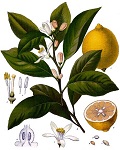
{PD-US} Now that the weather has turned to spring over most of the
U.S., many people turn their minds to spring cleaning. There is something renewing about opening up
windows, letting in the fresh air and sunshine in, and clearing out your space
to make room for new, healthy opportunities. While you may focus on cleaning house, Water2Drink invites
you to consider the health of your body, organs, and tissues. Our bodies are more than 60 percent water,
the brain and muscles are 75%, bones are about 22%, and the blood is an
astounding 92% water. Keeping your organs in top working condition and
preventing toxic buildups in the body can be helped by a simple solution: drink
clean, filtered water with fresh lemon.
Drinking water with lemon has a variety of benefits. Staying hydrated is the most important, but
there are others equally as important. Lemons are an #alkaline food when
ingested (the citric acid does not create acidity in the body once it’s
metabolized). Water with lemon helps with weight loss, both because of its
alkaline properties and also because of lemon’s high pectin fiber content,
which helps fight cravings. The vitamin
C contained in lemon juice can boost your immune system, control blood
pressure, helps dissolve uric acid that often is related to joint #inflammation,
and cleanse toxins from the blood, which helps to clear the skin. Lemons are
also a good source of citric acid, potassium, calcium, magnesium, and
phosphorous.
It’s easy to add this simple tonic to your day. Simply start your day by drawing 8 to 12
ounces of filtered water and squeeze in the juice of half a lemon. It’s best to
drink this tonic when you first rise, at room temperature or warmed slightly
(warm the filtered water in a tea kettle or small saucepan, pour it into a cup,
and then add the lemon juice), as ice cold water may hinder the digestive
benefits. Drinking freshly filtered drinking water from your tap using a
Multipure Drinking Water System gives you convenient, clean, mineral-rich water
from your local water source. It also eliminates the need for expensive bottled
water and negates the impact of plastic bottles on the environment. |
 0 Comments 0 CommentsTweet |
The Best Just Got Better!Sunday, March 29, 2015 - Posted by Water2Drink, in Water News, Products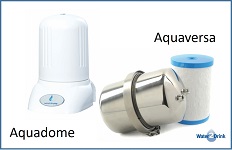
This week, Multipure International announced an important enhancement
to the Aquaversa (MP750) and Aquadome (MPAD) Drinking Water Systems. These two
models are now certified under NSF’s new Standard 401, “Emerging
Compounds/Incidental Contaminants,” to greatly reduce emerging contaminants
that are occurring in water sources today. These compounds include #pharmaceuticals
such as pain relievers and blood pressure medicine, hormones, herbicides and
pesticides, and other chemicals used as flame retardants and detergents.
The newly certified Aquaversa and Aquadome have been proven
effective in reducing the levels of the following 15 contaminants covered under Standard 401:
Atenolol Bisphenol
A
Carbamazepine Estrone
DEET Ibuprofen
Linuron Naproxen
Meprobamate Nonyl phenol
Metolachlor Phenytoin
TCEP Trimethoprim
TCPP
NSF International
surveyed more than 1,000 American consumers, and those surveyed indicated that
of the emerging contaminants, #pesticides and herbicides were of greatest
concern, followed by prescription drugs, detergents, flame retardants, and OTC
medicines. According to the survey, these
emerging contaminants were ranked by consumers as being of significant concern
to their health. #Standard401 addresses all of these contaminants, and now the
Aquaversa and the Aquadome are NSF-certified to reduce them.
|
 0 Comments 0 CommentsTweet |
World Water Day 2015Sunday, March 22, 2015 - Posted by Water2Drink, in Water News, Water Safety
Water2Drink invites you to celebrate to World Water Day 2015! Today is an opportunity to increase water
education and awareness of global water concerns, and to take steps to ensure
your family, your community, and the worldwide population has access to safe,
clean drinking water. To celebrate #WorldWaterDay, please watch this short video
by #LoveWater2015. It is visually stimulating and full of important facts
regarding planet Earth’s fresh water supply.
Some powerful quotes from this video…
“78% of the Earth’s
surface is water, yet only .01% is fresh and drinkable.”
“We have polluted
almost 95% of all fresh water on the planet.”
“More people die every
year from waterborne illnesses than from war.”
Water2Drink.com is proud to be an exclusive Multipure International distributor. With almost
45 years of dedication to water filtration, #Multipure is a pioneer in offering
innovative filter technology that provides superior quality and performance. #Water2Drink offers and supports the entire
family of NSF-tested and certified drinking #water systems from Multipure. Each product comes with a Performance Data
Sheet, a Lifetime Warranty (on the stainless and plastic housings), a 1-Year Warranty
on all Accessories, and a 90-Day Satisfaction Guarantee.
As the #LoveWater2015 video says, “Just as water can change course, so can we.” |
 0 Comments 0 CommentsTweet |
How Exposed Are You?Friday, March 13, 2015 - Posted by Water2Drink, in Health, Water News
An interesting study came across the Water2Drink.com news desk
this week. It is the 2014 Silent Spring Institute’s “Scientists Identify
Highest Priority Toxic Chemicals to Target for Breast Cancer Prevention Study
Fact Sheet.” This fact sheet gives breast cancer prevention tips by “identifying
high-priority chemicals and evaluating tools to measure exposure” to suspected
carcinogens.
The measurement methods are called “exposure biomarkers.” They can be used to study cancer risk and
assist the public in reducing exposure to known or suspected toxins. Many chemicals, though, have never been
studied because there was no reliable way to measure exposure to carcinogens.
Scientists need to track exposures to toxins to determine where they come from
and to investigate if exposure reduction efforts make a difference.
The Silent Spring Institute study is easy to read and understand. The study “evaluated 102 common chemicals
that cause mammary tumors in laboratory studies of rodents.” Many of these chemicals are from gasoline and
the petroleum industries. More specifically, the study says “Drinking water can
contain mammary carcinogens, such as byproducts of disinfection or solvents
that are common well water contaminants.”
While the study provides implications for public health,
more importantly it contains a section that addresses how to reduce your
personal exposures (#SilentSpring Study, Page 5). And while this study focuses on #breastcancer,
the ways in which to reduce or eliminate the risks could apply to many #cancers.
There are many practical and easy steps, such as avoiding fuel and exhaust
(petroleum), using ventilation fans, and properly storing solvents and other
chemicals. The most significant suggestion is: “Use and maintain a solid carbon
block drinking water filter.”
The entire Multipure family of drinking water systems
feature a solid carbon block filter that is NSF-tested and certified to the
sub-micron level. A #Multipure Drinking
Water System does an amazing job of reducing chloramine, chlorine, disinfection by-products, and dozens of other contaminants, both naturally occurring
and man-made. |
 0 Comments 0 CommentsTweet |
Do You Know Your Neighbors?Friday, March 6, 2015 - Posted by Water2Drink, in Health, Water News, Water Safety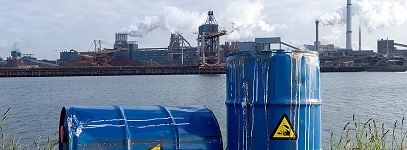
The March 5, 2015, issue of The Atlantic online magazine (theatlantic.com)
covers a consequential story about the Rice family outside of Asheville,
NC. Bob and Dot Rice bought a piece of
property in 1974, built a home there, raised children, and planned for the property
to be passed along to their two sons and their children. The home water source was a local spring a
few hundred yards behind the family cabin. According to the article, “after they moved in, the
Rices noticed the water coming out of the spring had a salty taste and smelled
musty.” They could smell a distinct #petroleum
smell coming from their well and spring, “especially when it rained. ‘I got
used to it,’ Terry Rice said. ‘We checked for bacteria. We didn’t check for
chemicals.’” In 1999, a family friend
discovered environmental contamination in the spring, along with barrels from a
long-closed factory that once bordered the property.
The contamination came from CTS Corporation, which operated a
factory plant that closed in 1986. The
company produced electronic components, and workers there used #TCE, a
colorless solvent with a sweet odor.
The article states, “Drinking or breathing high levels of TCE may cause
nervous system effects, liver and lung damage, abnormal heartbeat, coma, and
possibly death, according to the Agency for Toxic Substances and Disease Registry website. The EPA investigation found that CTS employees
were disposing of TCE and other chemicals by pouring them down the drains and
letting the chemicals leach into the ground.” A year after closing the factory, the company
sold the property to developers who had the soil at the site tested, but never had
the groundwater sampled or tested. Adding
insult to injury, the EPA “had a chance to clean up the site years ago but
didn’t. A memo from 1991 shows that federal regulators knew pollution from the
former factory threatened the surrounding community’s water and air. But the
agency failed to do more testing or even warn residents of potential dangers.”
This type of contamination can be an environmental nightmare. A wide range of chemicals can contaminate our
water, land, or air, which impacts our environment but also our health. Some pollutants resist breakdown and can
accumulate in the #foodchain, being absorbed by fish or wildlife, and then
eaten by residents. Contamination can
also impact coastal areas, waterways, surface water sources, and groundwater. It can be years or decades before the
contamination is identified, and even longer for the sites to be cleaned and
the water source becomes healthy again, if ever.
To combat environmental contamination, water consumers and
home buyers should educate themselves on the surrounding areas. What businesses
or industries are or were nearby? Were there #chemicals used in that industry? Has
there been environmental testing in the area? Even if your water source is
municipal (provided by your city or county), there are many opportunities for
water contamination to occur between a water treatment plant and your
home.
We at Water2Drink.com believe you have the power to protect
yourself and your family by using a water filtration device such as a Multipure
Drinking Water System. The family of #Multipure Drinking Water Systems are NSF-tested
and certified to reduce TCE and dozens of other chemical and organic contaminants,
including arsenic, metals and cysts. Each Multipure filter Owner’s Manual comes
with a Performance Data Sheet that outlines exactly what contaminants the
filters are certified to reduce, and to what degree. Most contaminants are reduced
more than 99 percent! |
 0 Comments 0 CommentsTweet |
Your Water CycleSaturday, February 28, 2015 - Posted by Water2Drink, in Water News, Water Safety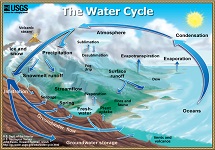
When you think about it, all water on the planet is
recycled. The water cycle that we
learned about in elementary school (evaporation; condensation; precipitation;
collection) shows that the Earth’s water is always in movement on, above, and
below Earth’s surface. Of the world’s
total water supply (about 332.5 million cubic miles), over 96% is saline, or
salt water. Of the total freshwater available
to us, over 68% is unavailable, frozen into ice and glaciers. Within the #watercycle, the fresh water
sources we use (surface and ground waters) are the only waters available to
sustain life. So how do we treat this water? Once we use water, it is
gathered by sewer or septic field, treated, and released back into the environment. Most of us know generally that water
treatment plants collect surface or ground #water, treat it to remove
contaminants, and then distribute it to our homes, fire hydrants, and water
fountains. Would you like to know a
little more about that process?
The Environmental Protection Agency (EPA) has created a
virtual tour of a water treatment plant so consumers can see step by step what
actions are taken in the treatment and delivery of drinking water. The #EPA video explains the difference
between surface and ground water, points out potential sources of #contamination,
and describes the disinfection process.
It is yet another source of information for water consumers as they
decide whether this process is enough to protect your health, or if they would
like to use a final barrier solution, such as a home-installed #Multipure
Drinking Water System. |
 0 Comments 0 CommentsTweet |


